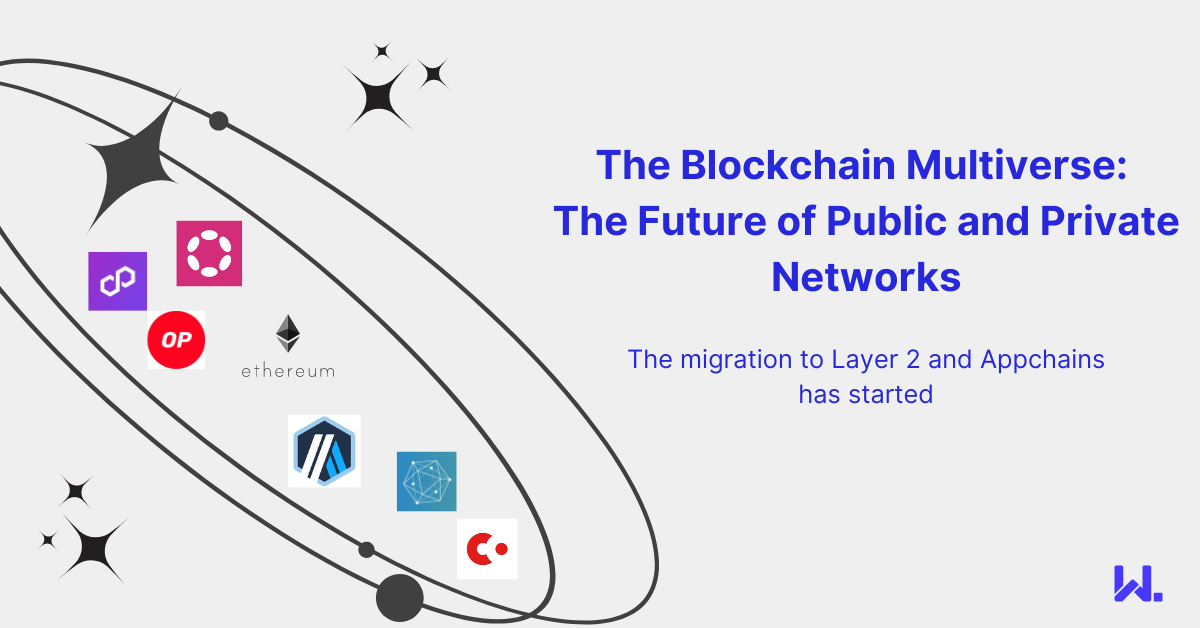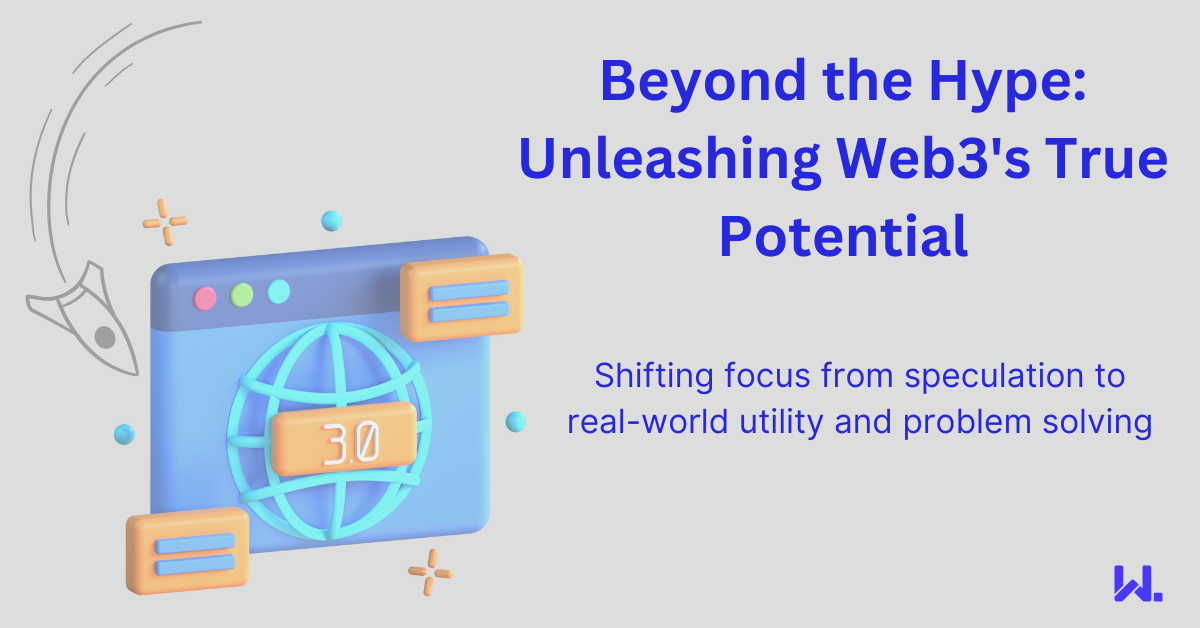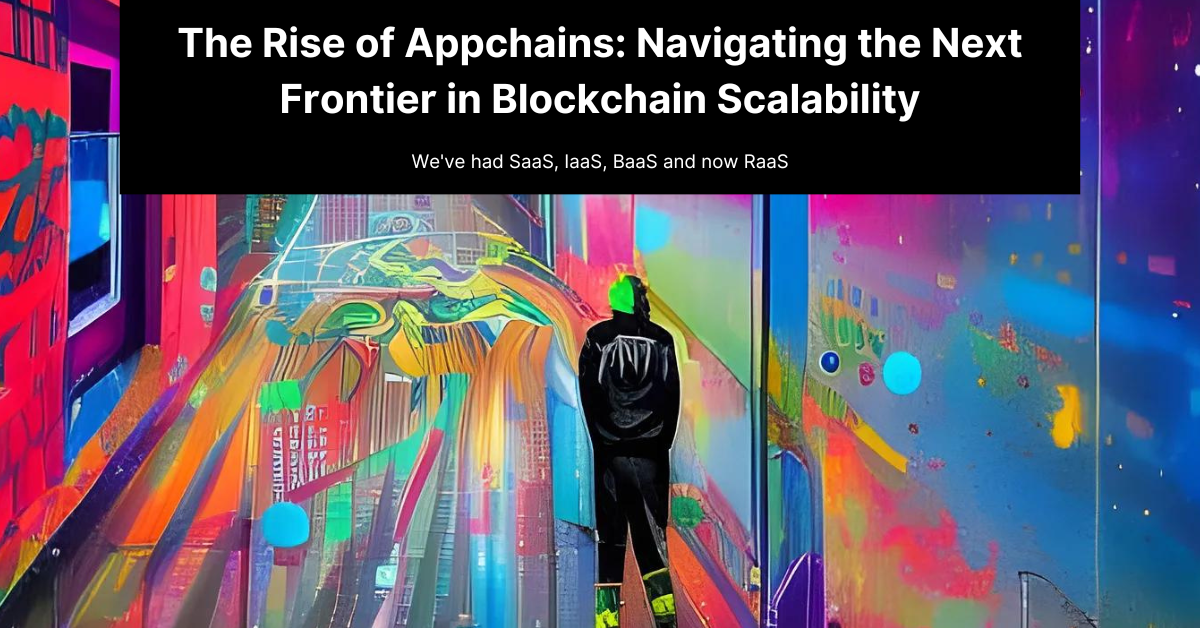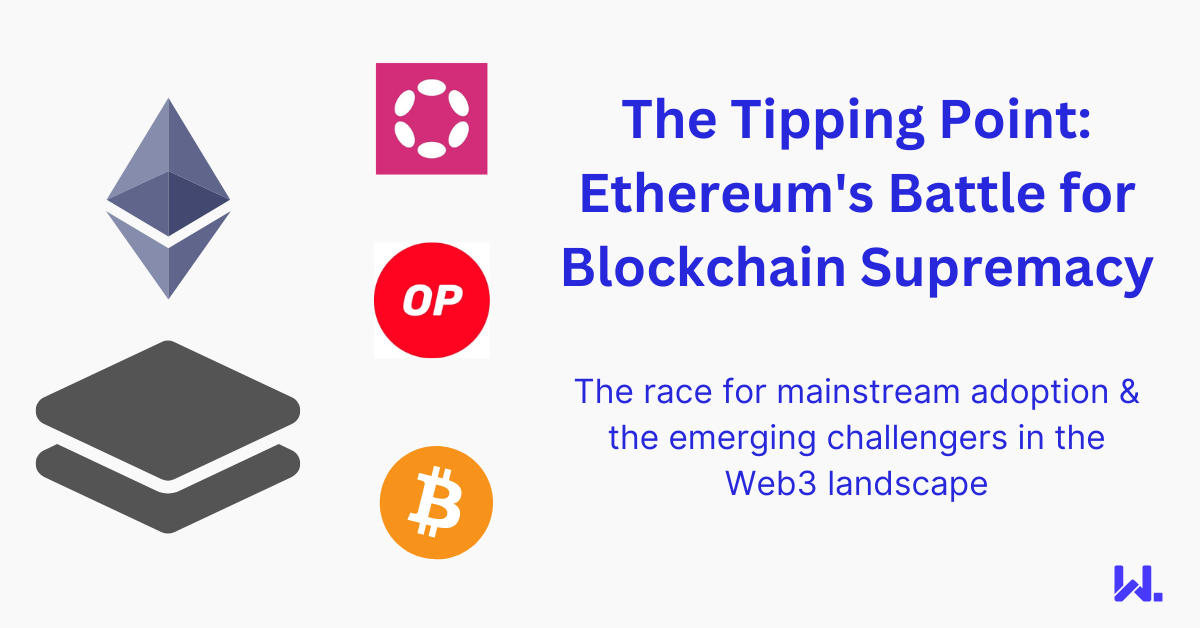The Blockchain Multiverse: The Future of Public and Private Networks
What's the end goal for public blockchains? I've lost track of the amount of time I've spent mulling over this question during the past 7 years.
As with any new technology, the scale of potential opportunities it's applicable to is huge. I was recently invited to give a lecture to the students at Imperial College's Executive MBA program. What was clear when fielding questions from the students on blockchain, many of whom had successful careers across a number of different industries, was that the surface area of potential applications is huge.
However, the challenge with any nascent technology is what is the inflexion point that moves it from being an experimental tool in the hands of innovation departments to being a core technology that underpins critical parts of a business?
We know that blockchain networks aren't mainstream technologies yet, but as Bloomberg highlighted in their recent article Wall Street Spots Blockchain Opportunities as Crypto Stumbles, permissioned blockchain networks are gradually becoming entrenched within our existing financial institutions.
The multi-chain future
There is little doubt that the future will be multi-chain, but what does multi-chain really mean? Are we talking about a handful of permissionless public blockchain networks which capture the lions-share of activity? Do permissioned networks, both public and private have a future?
At its core, a blockchain network provides a mutual layer of trust. This removes the need for intermediaries to provide this. Regardless of the type of blockchain network we're referring to, public, private, permissioned, or permissionless, this still holds true.
Private networks are not dead
The needs of the network participants dictate what type of networks is most appropriate for them. Are you a business that has specific counterparties that you want to regularly transact with? Are those counterparties in a heavily regulated industry? If so, you'll still likely need a private-permissioned blockchain network.
Do you want to be able to transact with anyone in the world, regardless of location? If so, a permissionless public blockchain network provides ideal rails.
Whilst public networks are likely to have the furthest reach, due to the fact that they are accessible via the internet, their permissionless nature means that they will not be able to meet the needs of all.
Returning to the point on heavily regulated industries, no major nation is going to be comfortable relying on a permissionless network for infrastructure of national importance. Think central-bank fiat rails or government identification platforms.
Perhaps in multiple decades, this may change, but given the current geopolitical landscape, the world's nations are if anything becoming increasingly isolated from one another rather than embracing each another with open arms.
This means that whilst the majority of the innovation taking place is on public blockchain networks, we will still see these innovations being incorporated into private networks.
How many is too many?
Returning to the question of how many networks there will be in our multi-chain future, I see it as being unbounded. There will be as many networks as it makes sense for. However, many of these networks will be considered layer 2, layer 3 or app chains.
They will be making use of one of a handful of established blockchain networks to secure themselves. They will use Ethereum, Polkadot, or some other base layer chain. During the past 5 years the number of base layer one networks has exploded. They will consolidate. Why compete with Ethereum, when you can join it?
By securing yourself against one of the largest public permissionless networks, you are able to benefit from the security and decentralisation of the underlying network without having to burden yourself with the overheads that come with bootstrapping and running such a network.
This includes bridging infrastructure which is one of the most brittle parts of many blockchain networks when it comes to transferring assets from one base layer network to another.
The migration is starting
We're in a transitional phase where this consolidation phase has yet to start in anger, although signs of it are already emerging.
-
Celo recently proposed that they transition to becoming a layer 2 network on Ethereum
-
Mythical Games announced that they were going to migrate onto Polkadot instead of being their own base layer network
This consolidation will start to gather more momentum once the Ethereum layer 2 landscape starts to solidify. At the current time, there are a number of layer 2 networks all vying for projects to build on them.
Some of these layer 2 networks are positioning themselves as native chains for decentralised applications, such as Arbitrum. Others are not only positioning themselves as base layers, but also providing the building blocks to launch appchains so that anyone can easily spin up a network using their technology that either secures itself on the Ethereum mainnet or a layer 2. Examples here include Optimism with their OP stack and Polygon with the Supernets.
It's likely that not all layer 2 networks will thrive, however, there is no limitation on why we can't end up with a large number of them. I believe it will come down to layer 2 networks establishing their own niches that serve specific use cases or industry verticals well.
Niche chains
I don't envisage a large number of general-purpose layer 2 networks, people don't want to have analysis paralysis when evaluating which network stack to use. In this respect, the Polkadot ecosystem is arguably further ahead of Ethereum with some very niche parachains (Polkadot's equivalents to layer 2 networks) emerging such as Energyweb and Centrifuge.
However, the Ethereum ecosystem has managed to capture significantly more value and has a first mover advantage against Polkadot and other competitors.
Where things do get interesting is when one considers what criteria will be used to secure private blockchain networks against base layer networks.
With technologies such as zero-knowledge rollups at their disposal, the amount of information that could be leaked by private networks anchoring themselves on a public network is not a consideration. But until public networks are responsible for securing much more meaningful amounts of assets or data (tens or even hundreds of trillions of dollars), the argument to place a dependency on them is somewhat weaker.
Suppose you have a consortium network consisting of a number of large, established enterprises, regulators and potential government entities. In that case, there isn't a compelling enough reason to secure these networks via a public blockchain network.
The trust between participants is likely adequate, providing they are aligned with respect to their scale and motives for being on this network. In addition, there is a considerable repetitional risk for participants should they behave in a manner that is not conducive to the intent of the network.
What is clear, is that significant momentum is building with layer 2s and rollups, and over the coming months, we're going to see huge growth in this sector.
Base layer networks, both public and private will remain, but where the majority of the action is going to is the upper layers of the protocol. This is healthy to see, as for the past few years we have seen too many companies trying to create their own base layer chains instead of working with what we already have and delivering greater value on top of these foundational layers.







